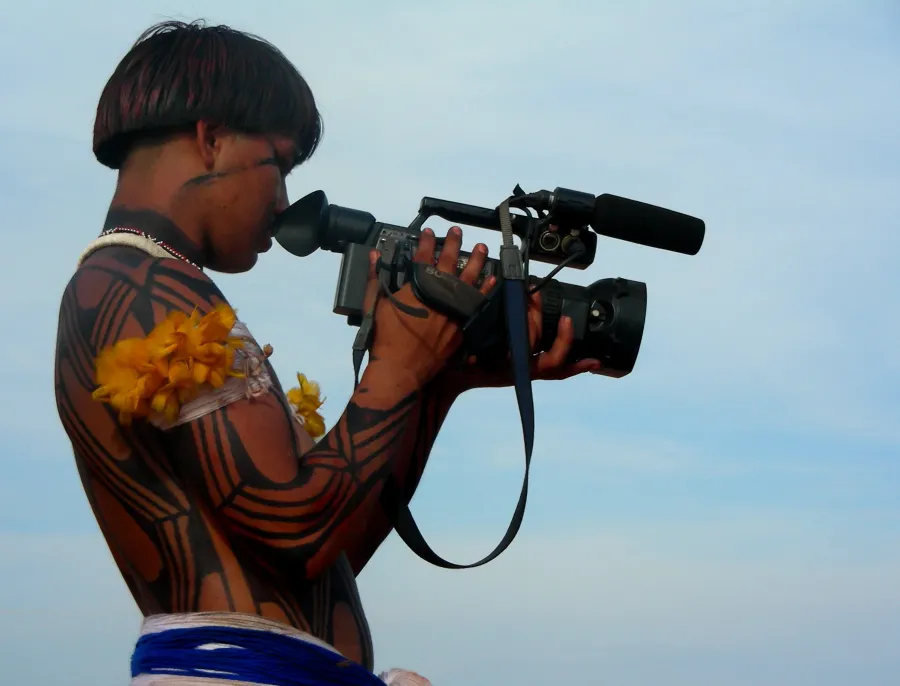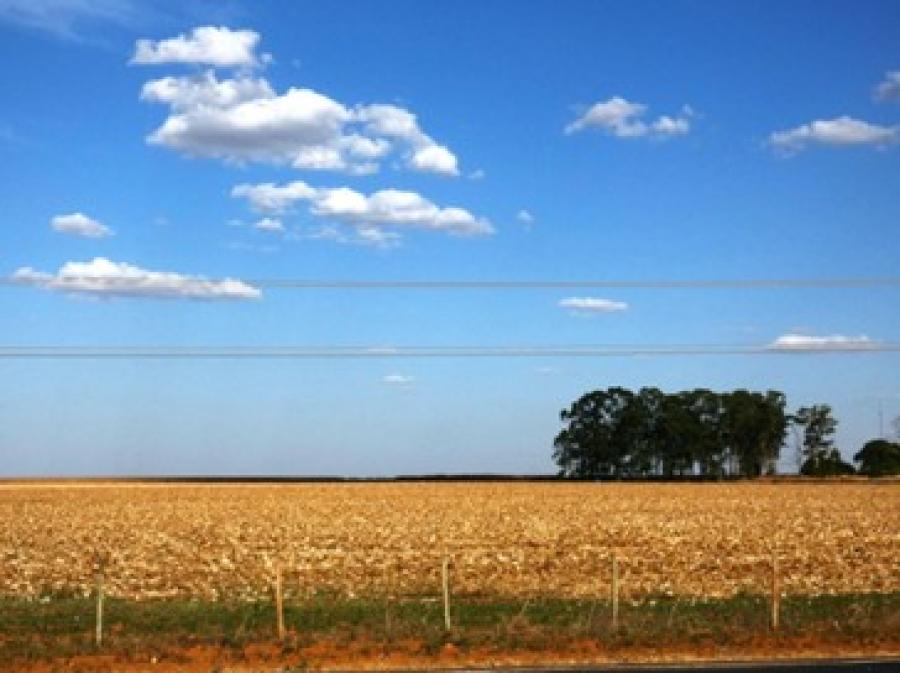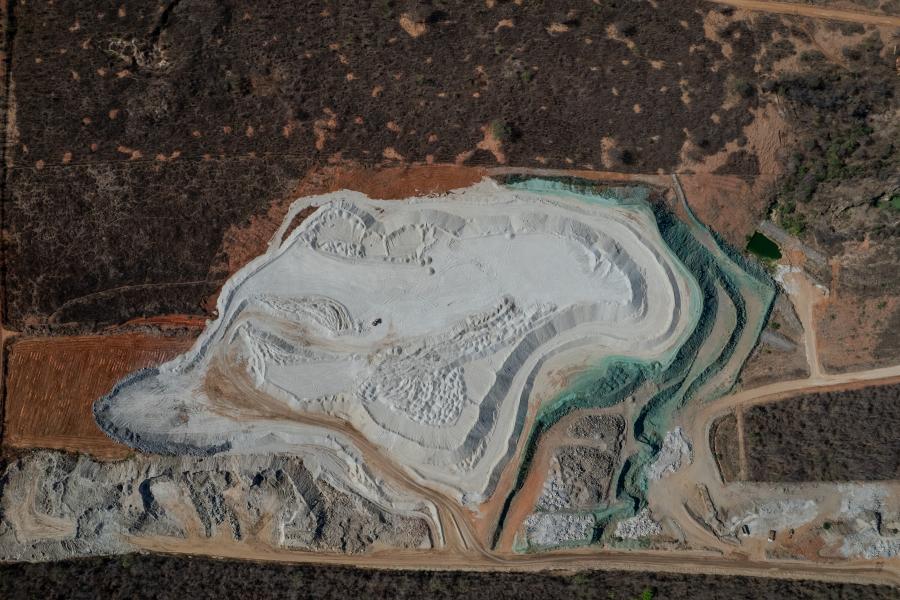Ayahuasca is a sacred brew that has a long history of ritual use among indigenous groups of the Upper Amazon. It is made from the stem of the ayahuasca vine (Banisteriopsis caapi, or in Quechua, “the vine of the ancestors”) and the leaves of either the chacruna (Psychotria viridis) or chagropanga (Diplopterys cabrerana).
Ayahuasca is associated with healing in collective ceremonies and in more intimate contexts, generally under the direction of specialists—ayahuasqueros. It falls under Michael Winkelman’s definition of “psychointegrators” because of its physiological effects that integrate emotion and conscious, pre-conscious, and unconscious processes. Traditionally ayahuasca was also used in warfare, divination, for artistic inspiration, and as the main theme of cultural narratives. In healing, its uses include identification of illness origin, shamanic journeys to restore soul loss, extraction of pathogenic objects, and shamanic fights with the animated agents of illness. In general, ayahuasca is used as an instrument to gain access to information coming from unseen realms, as well as from the social and natural environment.
Missionaries, health officials, and at times guerrilla organizations have persecuted ayahuasca use and indigenous spirituality. Among some groups it has disappeared all together, while other groups have only just adopted it. Collective ritual use of ayahuasca and other psychointegrator plants is important in strengthening social bonds. Indigenous groups that maintain the ritual use of these sacred plants, such as the Shuar of Ecuador, the Shipibo of Peru, and various Tukano groups in Colombia, are better prepared to maintain social cohesion vis-à-vis adverse economic and cultural forces. Robust use of ayahuasca and other “plant teachers” or “doctors” by a variety of practitioners among the mestizo riverine population of Peru is intimately linked with Amazonian ideas. All the main elements of core shamanism are present in this tradition: initiation procedures, which include dietary prescriptions; sexual segregation; and repetitive access to altered states of consciousness (ASC). It includes the acquisition of helpful animal spirits and the progressive learning of icaros, or magic songs, from spirits of nature. Its concepts of illness include soul loss (and requires concurrent shamanic flights to fetch and restore the soul to a patient), as well as the intrusion of partly material spiritual pathogenic agents that may be extracted by the shaman. In ayahuasca, as in core shamanism, the shamans transform themselves into various animals or elements of the natural world in order to explore various realms (typically underwater, earth, and sky) and attack or defend themselves from the attacks of rival shamans. Dismemberment and other sorts of symbolic death allow shamans to acquire shamanic powers from the ayahuasca. All of these elements are eloquently exemplified in the work of visionary painter and former vegetalista Pablo Amaringo.
Vegetalistas are mestizo practitioners —found mostly in Peru but also in other countries of the Amazon Basin—who derived their knowledge from the ingestion of certain vegetales (mostly psychointegrator plants) that they called doctores, or plant teachers. Parallel to the vegetalistas are a variety of other ayahuasca practitioners. Some call themselves oracionistas, and carry out their tasks mainly with the use of prayers, many from books such as La Santa Cruz de Caravaca, widely used by healers in Latin American countries. Other ayahuasqueros call themselves Rosicrucians, from an old esoteric tradition originating in Europe, or claim to belong to other semi-secret organizations. The variety of practitioners serving in the Amazon make it possible only on an individual basis to decide whether a practitioner could be called a shaman. Nonetheless, many of these practitioners have adopted the term chamán. All ayahuasqueros I have met consider themselves Christians and may invoke Jesus or Mary in their rituals. All of them engage principally in healing, and at times also divination.
Changes in Ayahuasca Traditions
In recent years the outside world’s perception has changed significantly regarding shamanism and the sacred plants used by traditional groups. Non-Amazonians’ growing interest in ayahuasca is now being satisfied by others: members of indigenous communities who normally would not be interested in this kind of knowledge, mestizo practitioners with various degrees of expertise, and non-Amazonians who have been taught by practitioners. Some Amazonian practitioners suddenly find that their traditional knowledge has a value in the eyes of non-Amazonians and can be an important source of income, while other indigenous groups firmly reject non-Amazonian practitioners. Perhaps the most notable example of rejection of non-indigenous use is the publication of the Yurayaco Declaration issued by Unión de Médicos Indígenas Yageceros de la Amazonía Colombiana (UMIYAC), an organization of ayahuasqueros (or yageceros, as the practitioners are called by some indigenous peoples) from Ingano, Kofan, Siona, Kamsá, Coreguaje, Tatuyo, and Carijona indigenous groups (see page 24 this issue).
Article 4 of the declaration states: There are those who take our seeds to patent them, to own them. Others want to declare yagé a narcotic plant and prohibit its use for the good of humanity. We also denounce those anthropologists, botanists, business people, doctors and other scientists who are experimenting with yagé and other medicinal and sacred plants without taking into account our ancestral wisdom and our collective intellectual property rights. The statement refers to attempts by American Loren Miller and others to patent the ayahuasca plant, taken from the garden of an indigenous community in Ecuador, as well as similar efforts to obtain legal possession of rights to ayahuasca.
Indigenous practitioners in other areas have different opinions on the matter. Hilario Chiriap, a Shuar shaman from Ecuador, told me that in his community there is the tacit understanding that “white people are using ayahuasca and are going to use ayahuasca in the future; therefore we should at least teach them to use it properly.” During his training and healing sessions Don Hilario emphasizes traditional prescriptions such as the maintenance of a certain diet, sexual segregation, and periods of intense training—preferably in isolation—to give non-indigenous novices legitimacy. The use of ayahuasca by indigenous and non-indigenous practitioners and in shamanic, religious, and non-religious rituals, has created a complex phenomenon. Vegetalistas have used ayahuasca for more than 100 years. Since the 1930s syncretic religious organizations, which are now found in every major Brazilian city and other countries, have started using ayahuasca as a sacrament. Modern non-indigenous ayahuasqueros are therefore now emerging from several sources.
Indigenous and mestizo ayahuasca traditions met religious Afro-Brazilian religious elements and European esoteric traditions through several waves of migrations into the Amazon from the Brazilian northeast. Some immigrants—including Raimundo Irineu Serra (1892-1971) and Daniel Pereira de Matos (1904-1958) in Rio Branco, Acre, and José Gabriel da Costa (1922-1971) in Porto Velho, Rondonia—created syncretic religious organizations that used ayahuasca as their central sacrament. A fourth religious leader, Sebastiâo Mota (1920-1990), a follower of Serra, created after Serra’s death a new separate religious branch. The Centro Eclético de Fluente Luz Universal Raimundo Irineu Serra (Raimundo Irineu Serra Eclectic Center of Fluid Universal Light, CEFLURIS), created in 1972, first operated in urban areas of many Brazilian states, and later expanded into other European countries, the Americas, and Japan. The original organization, known as Alto Santo, divided into several small nuclei and remains an Amazonian phenomenon. The religious organization created by de Matos, known as Barquinha, is now going through its own division process and remains in the Amazon. The Uniâo do Vegetal created in 1961 by da Costa, is experiencing the greatest growth. It is found in nearly every major Brazilian city, has members in all levels of society, and is spreading to other countries. Followers of Serra, de Matos, and Mota call the sacred ayahuasca brew Santo Daime, while followers of José Gabriel da Costa call it vegetal. The use of ayahuasca by these religious groups served as a great binding force, especially in the aftermath of Amazonian economic ruin caused by the shift of the center of rubber production to Southeast Asia in the beginning of the 20th century.
Brazilian scholars such as Clodomir Monteiro, Fernando Couto, and Edward McRae suggest a sort of “collective shamanism” when referring to the Santo Daime religions. Serra’s and Mota’s experiences have shamanic motifs, including mastery of ASC, and a focus on healing. The main emphasis is on the doctrine, however, codified in hymns and ritual—not in journeys to other dimensions. Barquinha is more closely associated with spirit possesion than with shamanic flight, even though it is the closest to Amazonian sources because of the importance of the so-called encantados—spirits incorporated in plants or animals—in its cosmology. The Uniâo do Vegetal, on the other hand, actively rejects any kind of possession, as well as any emphasis on healing or ASC. People frequently move between different ayahuasca churches, and schisms exist within these religious organizations when new charismatic leaders emerge and other religious organizations gradually incorporate use of ayahuasca into their own activities. As a result, more new groups have been led by neo-ayahuasqueros. Ayahuasca shamanism is thus a broad and complex concept encompassing indigenous use, mestizo use, to a certain extent use by some syncretic Brazilian religious organizations, and use by certain non-indigenous practitioners.
Contemporary Neo-Ayahuasquero
For the last six years I have acted as a neo-ayahuasquero, and can therefore speak of my own work as an example of contemporary non-indigenous practices. I studied indigenous ayahuasca shamanism, was trained by mestizo and indigenous practitioners, and did extensive fieldwork as a participant-observer among the three main Brazilian religious organizations that use ayahuasca as a sacrament. The decision to start administering ayahuasca to others was not a sudden one. Not until 25 years after my first ayahuasca experience did I start doing rituals of my own, initially more due to external demand from others than by own initiative. In retrospect, however, I can see this development was logical, because from the beginning I had both academic and personal interest in the particular states of consciousness elicited by the ayahuasca. I have been actively collaborating in scientific studies leading toward a clarification of the ayahuasca phenomenon.
My years of participation in rituals in various contexts have given me confidence in my own expertise. While responsible for a group of people experiencing ayahuasca and under the effects of the brew myself, I think, speak, and act differently from my normal state. I have noticed how effectively I am able—in most cases in a short span of time—to help a person regain balance when they become frightened during their experience. I lightly touch various parts of the body, while humming and at times “blowing in energy” by blowing forcefully three times in their solar plexus area (between the chest and the navel). At times during sessions people may feel they have a pain in a specific part of their body. It may not be due to a physical illness, but may be a concrete manifestation of the patient’s problems. I symbolically extract the pain, much like a mother comforts an injured child by rubbing the wound and singing. The people later acknowledge relief. I insist on not being called a shaman—preferring the term “facilitator”—for several reasons. First, I do not act within a shamanic cosmology and body of metaphors. I also do not teach any doctrine or specific body of ideas. Participants in my seminars come from many different cultures and parts of the world, and during the seminar each navigates his or her own internal world when they experiment with the ayahuasca brew. Secondly, I encourage people to face their fears and use the energy that often manifests itself in the ayahuasca experience by themselves, avoiding too great a reliance on others. My job is to create a secure and supportive environment for intense internal exploration. I must also acknowledge, however, that I am doing shamanic work when I construct, with music (through rattling by means of a few icaros I learned from shamans, or through recordings), a comfortable environment for people to enter ASC produced by ayahuasca. I especially use shamanic practices when I treat participants by blowing, humming, or sucking out foreign energies. The combination of all my interests, scientific and of a more personal nature, led me to the creation of Wasiwaska Research Center for the Study of Psychointegrator Plants, Visionary Art, and Consciousness, in Florianópolis, southern Brazil.1 I periodically organize seminars for scientists, therapists, writers, artists, other professionals, and students. The seminars include a combination of ayahuasca sessions; holotropic breath work (rapid and rhythmic deep breathing that induces ASC); literary, musical, or artistic expression workshops; lectures by recognized specialists; and excursions. Wasiwaska is a base for serious exploration and scientific research that reflects my work, and that of other contemporary ayahuasqueros, which is based on indigenous techniques that have changed through time as they have been passed from indigenous groups that used ayahuasca traditionally to indigenous groups that have adopted it in recent times, to mestizo practitioners and non-Amazonians.
The Yurayaco Declaration code of ethics released in 2001 should apply, with some modifications, to the work of legitimate non-indigenous practitioners. The code, however, has two aspects that I cannot accept. First, it rejects any kind of ayahuasca experimentation by scientists, botanists, medical doctors, or anthropologists. Understanding that shamanic knowledge has been exploited and abused, I believe a fair dialogue is needed between indigenous ayahuasqueros and Western people. Scientific studies of ayahuasca could be of great importance in the study of healing and studies of conciousness and the mind. The code also negates the reality of the mestizo population of the region, and the fact that many indigenous shamans have trained Westerners such as myself. I have had both mestizo and indigenous teachers, who I now honor by doing my own work.
Regardless of practitioners’ backgrounds, we must remember we deal with the sacred. The use of ayahuasca and other psychointegrator plants is sacred for the indigenous peoples of the Amazon, as well as for the mestizo shamans and members of the Brazilian churches. Any use of ayahuasca has to be respectful of this tradition.
1. For more information about the center, see www.wasiwaska.org.
References and further reading
Couto, F.R. (1989). Santos e xamãs. Estudos do uso Ritualizado da Ayahuasca por Caboclos da Amazônia, e, em particular, no que Concerne sua Utilização Sócio Terapêutica na Doutrina do Santo Daime. Master thesis. Department of Anthropology, University of Brasília.
Dobkin de Rios, M. (1984). The Vidente Phenomenon in Third World Traditional Healing: An Amazonian Example. Medical Anthropology 8(1), pp 60-70.
Yurayaco Declaration. (1999). Encuentro de Taitas en la Amazonía Colombiana. Ceremonias y Reflexiones. Yurayaco, Colombia. See http://www.ethnobotany.org/actnew/umiyac-declaration.html
Goldman, I. (1963). The Cubeo: Indians of the Northwest Amazon. Urbana: University of Illinois Press.
Labate, B.C. (2000). A Reinvençâo do uso da Ayahuasca nos Centros Urbanos. Master thesis. Unicampi, Campinas.
Labate, B.C. (2002). A literatura brasileira sobre as religiôes ayahuasqueira. In O Uso Ritual da Ayahuasca. Mercado de Letras. Campinasin Labate, B.C. & Araújo, W.S., Eds.
Luna, L.E. (1984). The Concept of Plants as Teacher Among Four Mestizo Shamans of Iquitos, Northeast Peru, Journal of Ethnopharmacology 11, pp 135-156.
Luna, L.E. (1986). Vegetalismo: Shamanism Among the Mestizo Population of the Peruvian Amazon. Stockholm: Almqvist & Wiksell International.
Luna, L.E. & Amaringo, P. (1991). Ayahuasca Visions: The Religious Iconography of a Peruvian Shaman. Berkeley, California: North Atlantic Books.
Luna, L.E. & White, S.F., Eds. (2000). Ayahuasca Reader. Encounters with the Amazon’s Sacred Vine. Santa Fe, Ne Mexico: Synergetic Press.
MacRae, E. (1992). Guiado pela Lua: Xamanismo e uso Ritual da Ayahuasca no Culto do Santo Daime. Brasiliense, São Paulo.
Monteiro da Silva, C. (1983). O Palacio de Juramidan. Santo Daime: um Ritual de Transcendencia e Despoluição. Master thesis. Recife, Pernambuco.
Reichel-Dolmatoff, G. (1975). The Shaman and the Jaguar: A Study of Narcotic Drugs among the Indians of Colombia. Philadelphia: Temple University Press.
Winkelman, M. (2001). Psychointegrators: Multidisciplinary Perspectives on the Therapeutic Effects of Hallucinogens. Complementary Health Practice Review 6(3), pp 219-37.



